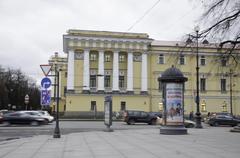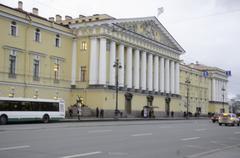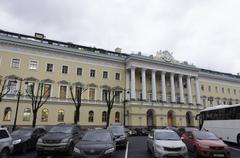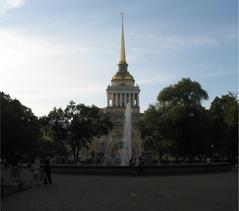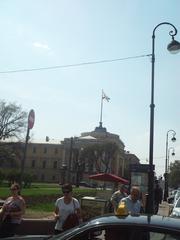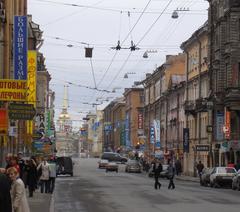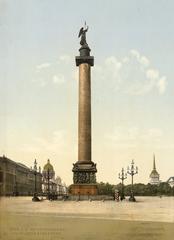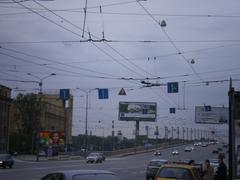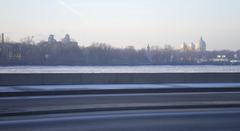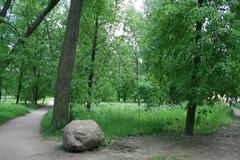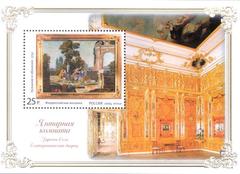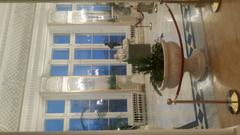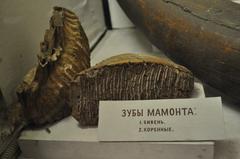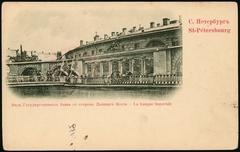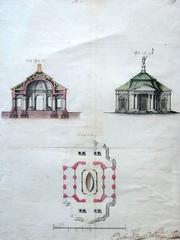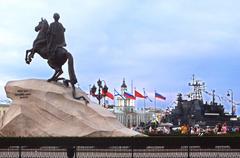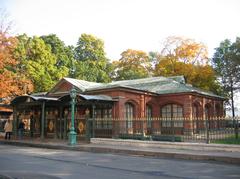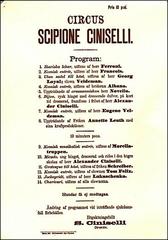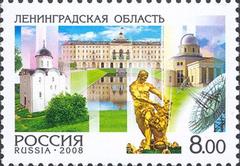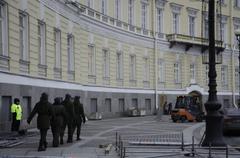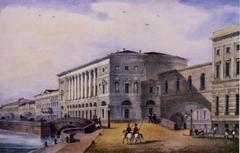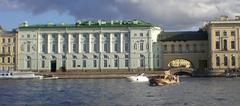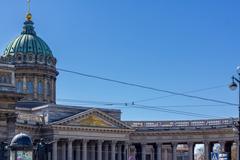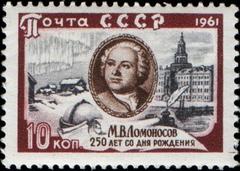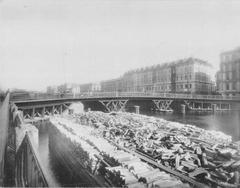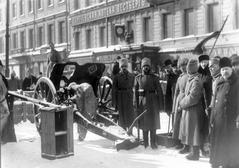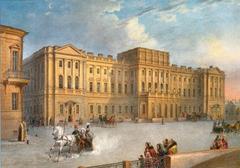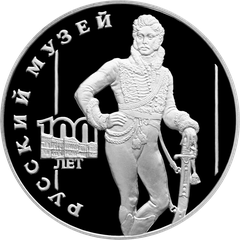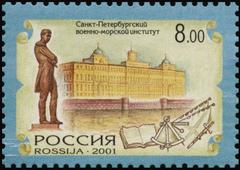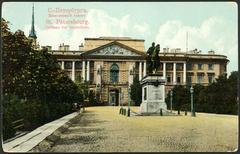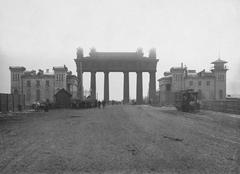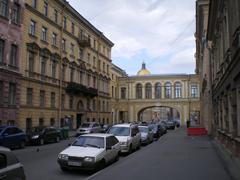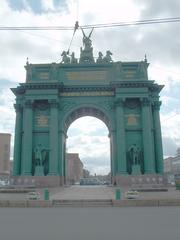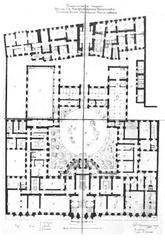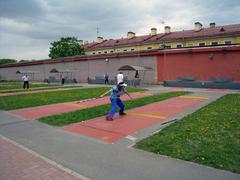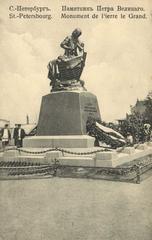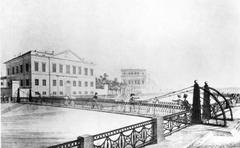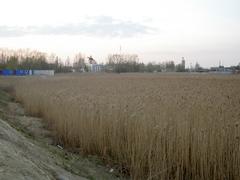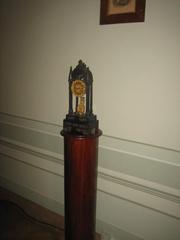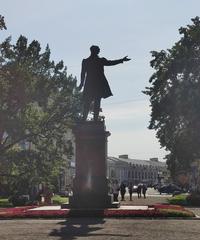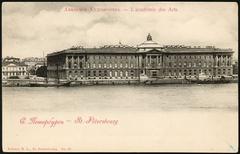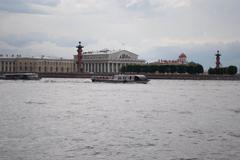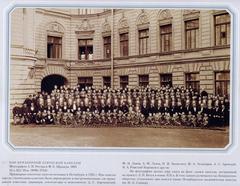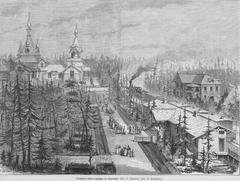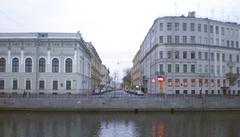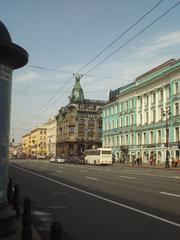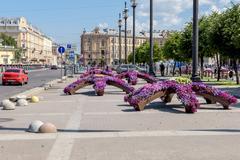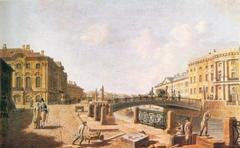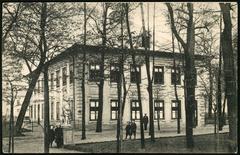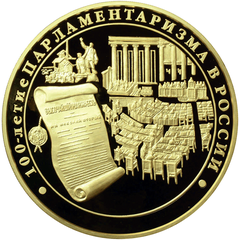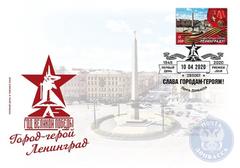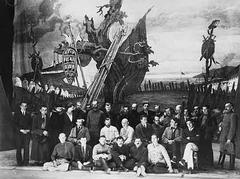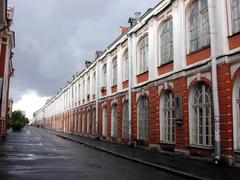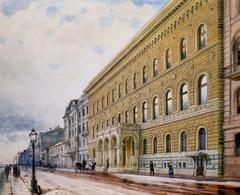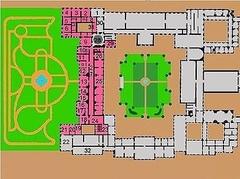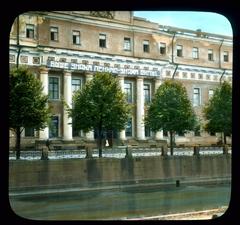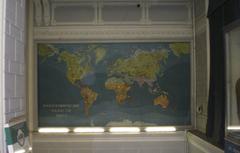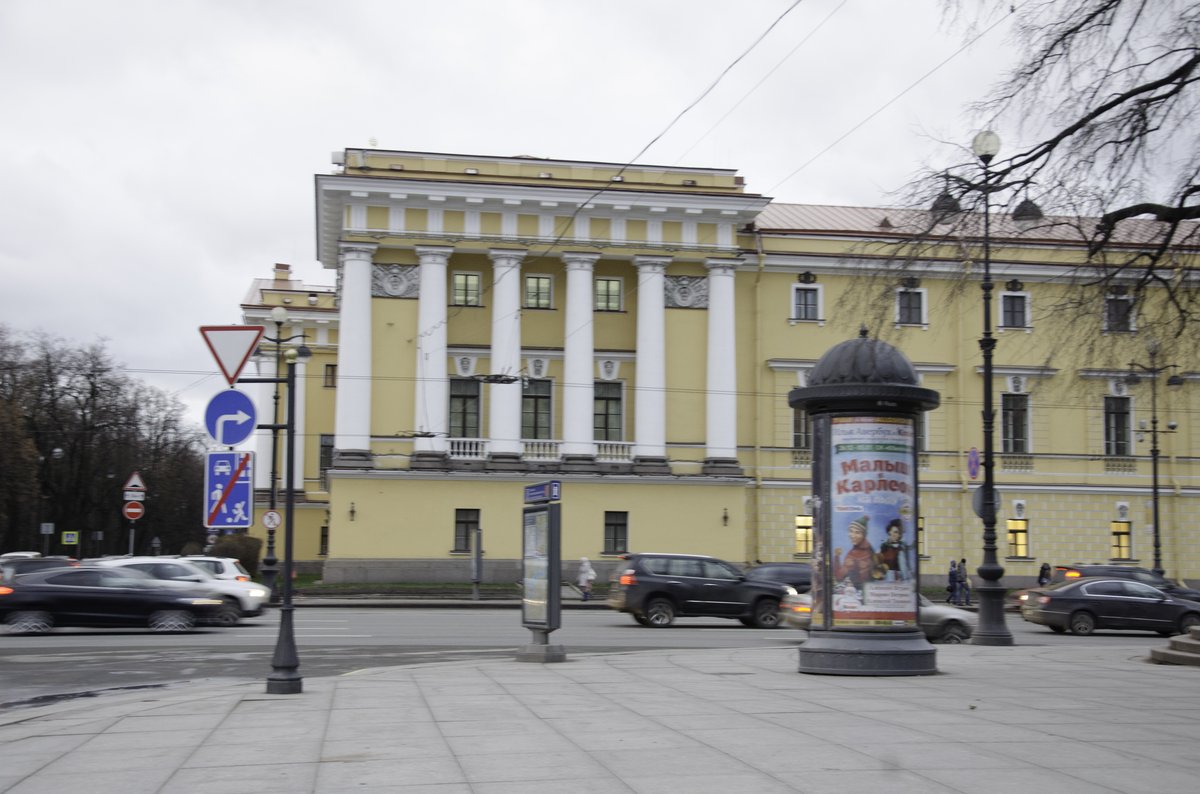
Admiralty Building Saint Petersburg: Visiting Hours, Tickets, and Historical Significance
Date: 14/06/2025
Introduction
The Admiralty Building in Saint Petersburg is a monumental symbol of Russia’s naval heritage and imperial grandeur. Founded in 1704 by Peter the Great as a fortified shipyard and naval base, it played a pivotal role in the city’s development as Russia’s “window to Europe.” Over the centuries, the Admiralty has evolved into a masterpiece of Empire style architecture, crowned by its iconic gilded spire with a ship-shaped weather vane. Although the building now serves as the Russian Navy’s headquarters and is not open for interior visits, its richly adorned façade and surrounding gardens make it a must-see landmark for visitors. This comprehensive guide covers the Admiralty’s history, architectural highlights, visitor access, nearby attractions, and essential travel tips (modern-info.com; travelpetersburg.com; saint-petersburg.com).
Table of Contents
- Historical Overview and Peter the Great’s Vision
- Architectural Evolution: From Fortress to Monument
- Symbolism and Decorative Features
- Practical Visitor Information
- Nearby Attractions
- Special Events and Guided Tours
- The Admiralty in the Urban Landscape
- Photography Tips
- Frequently Asked Questions (FAQ)
- Legacy and Continuing Significance
- Plan Your Visit
Historical Overview and Peter the Great’s Vision
The Admiralty Building is among Saint Petersburg’s earliest and most significant structures. Conceived by Peter the Great in 1704, it was initially both a shipyard and a fortress, critical for Russia’s naval ambitions during the Great Northern War. The original complex featured bastions, workshops, and the Admiralty Canal—integral for shipbuilding and transportation (modern-info.com; travelpetersburg.com).
As the military threat subsided, the Admiralty’s defensive function waned, and it became the hub for ship construction and the city’s naval administration.
Architectural Evolution: From Fortress to Monument
18th Century Transformations
In the 1730s, Ivan Korobov replaced the original wooden structures with stone, giving the Admiralty a more monumental presence. The building’s location, at the intersection of Nevsky Prospekt, Voznesensky Prospekt, and Gorokhovaya Street, made it a central feature of Saint Petersburg’s urban plan (modern-info.com).
19th Century Redesign by Zakharov
The Admiralty’s current form is the work of architect Andreyan Zakharov (1806–1823), who transformed it into a grand administrative complex in the Empire style. Zakharov’s design expanded the complex to 400 meters in length, preserving only the central tower and gilded spire from earlier versions. The monumental façade, adorned with colonnades and sculptural groups, underscored the importance of the Russian Navy and the imperial capital (travelpetersburg.com).
Public spaces like Alexander Garden and Konnogvardeisky Boulevard replaced the old fortifications, making the Admiralty a focal point for public life and city celebrations (modern-info.com).
Symbolism and Decorative Features
The Admiralty’s 72-meter gilded spire, topped by the ship-shaped “Korablik” weather vane, remains one of Saint Petersburg’s defining visual symbols (Discover Walks). The spire is complemented by a rich sculptural program:
- The main arch features nymphs carrying a globe.
- Statues of Alexander the Great, Achilles, Ajax, and Pyrrhus adorn the tower’s attic corners.
- Allegorical figures represent the four seasons, four winds, Isis (patroness of shipbuilding), and Urania (muse of astronomy).
These decorations celebrate Russia’s maritime power and reference both mythic and historical themes (travelpetersburg.com).
Practical Visitor Information
Visiting Hours
- Interior Access: The Admiralty serves as the Russian Navy’s headquarters and is not open for public interior tours.
- Exterior and Gardens: The surrounding gardens and exterior are open year-round from dawn until dusk (guideforyou-russia.com).
Tickets and Entry
- No ticket is required for viewing the building’s exterior or accessing the gardens.
- Guided city walking tours that include the Admiralty as a highlight are widely available (expresstorussia.com).
Accessibility
- The exterior areas and gardens are wheelchair accessible.
- There is no interior access due to the building’s official military function.
Travel Tips
- Best Viewing: Visit at dusk or during the “White Nights” for beautiful lighting on the gilded spire.
- Getting There: The nearest metro station is Admiralteyskaya (Line 5), about 450 meters away. Multiple bus routes and minibuses stop nearby.
- Facilities: Public restrooms are available in nearby parks and museums.
Nearby Attractions
The Admiralty’s central location places it within walking distance of many of Saint Petersburg’s renowned sites:
- Winter Palace and Hermitage Museum: One of the world’s premier art museums (trip.com).
- Saint Isaac’s Cathedral: Famous for its golden dome and panoramic views.
- Kazan Cathedral: A neoclassical landmark on Nevsky Prospekt.
- Peter and Paul Fortress: The city’s original citadel and burial place of the Romanovs.
- The State Russian Museum: Russia’s largest collection of fine art.
Special Events and Guided Tours
While the Admiralty’s interior is closed, exterior-focused city tours and cultural festivals such as the White Nights often feature the building and its history. During Navy Day and Victory Day, naval parades and public events are staged nearby, offering unique viewing and photographic opportunities.
The Admiralty in the Urban Landscape
The Admiralty is a visual anchor for Saint Petersburg, with its spire serving as a navigational landmark and a point of convergence for three major avenues. Its harmonious proportions allow it to stand alongside other imperial landmarks, contributing to the UNESCO-listed historic city center (saint-petersburg.com).
Alexander Garden, Palace Square, and the Admiralteyskaya Embankment provide panoramic views, making the Admiralty a favorite spot for artists and photographers (russinfo.in).
Photography Tips
- Best Light: Early morning or late afternoon to capture the golden spire.
- Top Spots: Alexandrovsky Garden, Admiralteyskaya Embankment, and the intersection of Nevsky Prospekt, Voznesensky Prospekt, and Gorokhovaya Street.
- Visual Highlights: Focus on the sculptural details, colonnades, and the iconic spire against the city skyline.
Frequently Asked Questions (FAQ)
Q: Can I go inside the Admiralty Building?
A: No, the interior is closed to the public due to its official role as the Russian Navy’s headquarters.
Q: Do I need a ticket to visit?
A: No tickets are required for viewing the exterior or walking in the surrounding gardens.
Q: Is the area wheelchair accessible?
A: Yes, the exterior spaces and gardens are accessible, but interior access is restricted.
Q: Are there guided tours?
A: Many city walking tours include the Admiralty and provide historical and architectural commentary.
Q: Where are the best photo spots?
A: Alexander Garden, Palace Square, and the embankment facing the Neva River offer excellent views.
Legacy and Continuing Significance
The Admiralty Building is a central emblem of Saint Petersburg’s history and identity, encapsulating the city’s maritime roots and imperial ambitions. It anchors the urban landscape, connects to Russia’s naval legacy, and remains a touchstone for both locals and visitors (modern-info.com; travelpetersburg.com).
Plan Your Visit
- For up-to-date information on special events, tours, and city festivals, check official Saint Petersburg tourism portals or reliable travel apps like Audiala.
- The Admiralty is best experienced as part of a walking tour of the city center, including nearby attractions such as the Hermitage, Saint Isaac’s Cathedral, and Palace Square.
- For dining and accommodation, the area offers options from budget hostels to luxury hotels, with cafes and restaurants nearby (saint-petersburg.com).
Sources
- modern-info.com
- travelpetersburg.com
- saint-petersburg.com
- Discover Walks
- Facts and Details
- russiatrek.org
- archtene.com
- expresstorussia.com
- guideforyou-russia.com
- visitrussia.com
- trip.com
